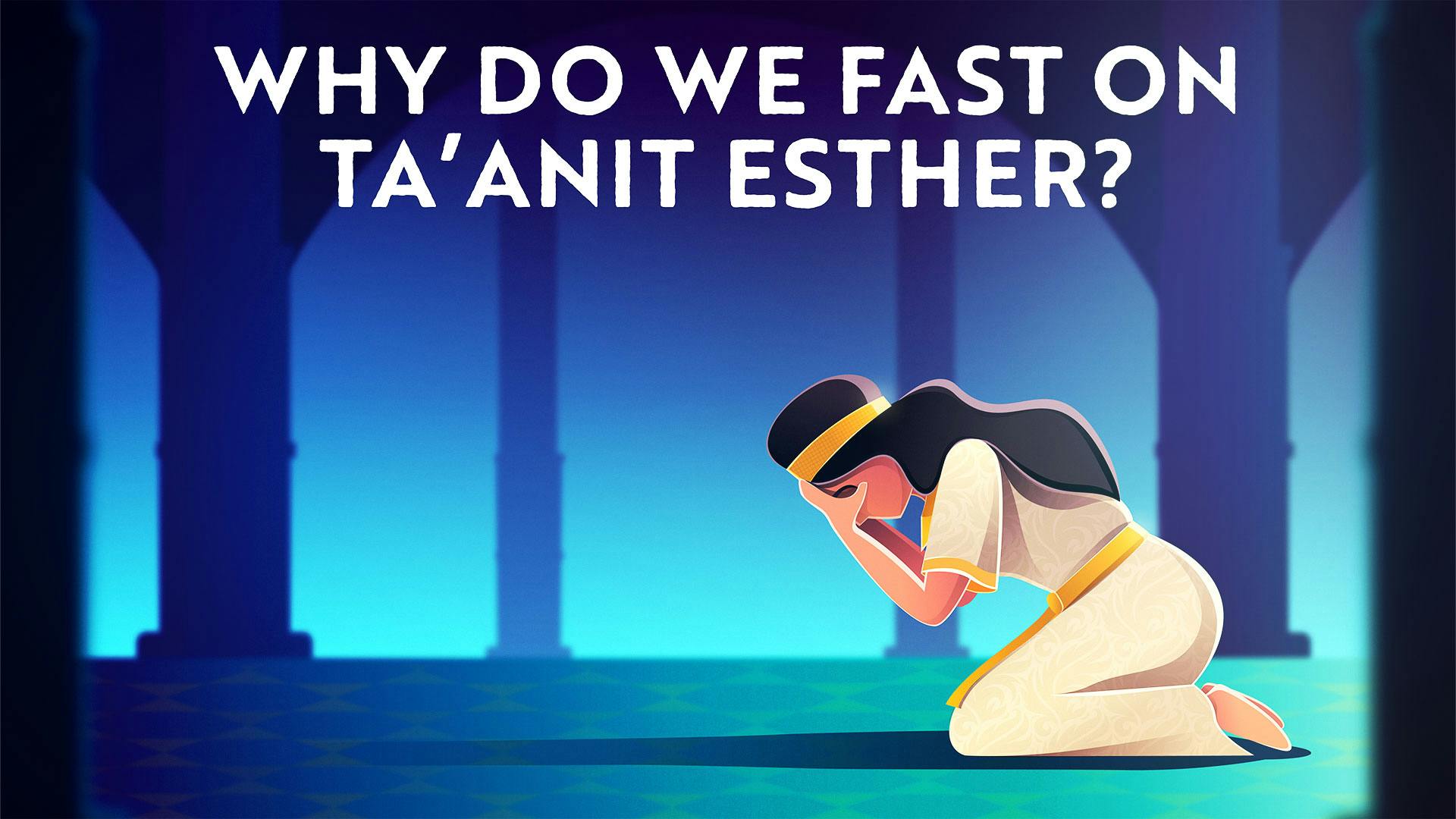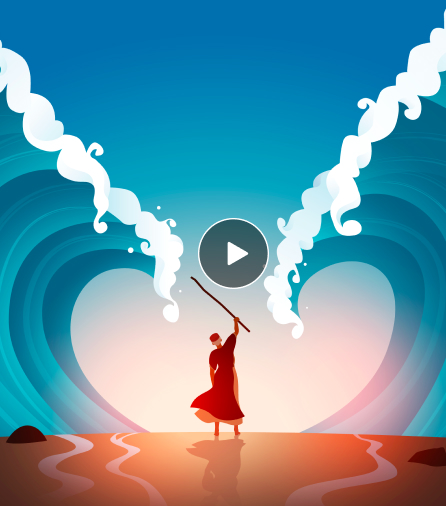Esther’s Fast (Taanit Esther): Guidelines & Meaning for the Fast of Esther
What is Esther’s fast? Why do we fast on Taanit Esther? Why is this fast day relevant to us in 2025?
BY Sarah Rashba | January 30, 2025 | 6 Minute Read

Fast of Esther: Where Does It Originate?
Joyous Holiday or Somber Fast?
Purim is coming, the most joyous Jewish holiday of the year! Get your costumes ready! Prepare to give out your shaloch manot! But wait – let's fast first. What…a fast day…now, right before Purim? Why are we stopping all the joy and excitement of Adar and suddenly replacing it with the somber mood of a fast day? How does a fast day make any sense as a lead into Purim? I mean, wouldn’t it be much easier to pack up our shaloch manot or focus on Megillah reading Purim night if our brains and our stomachs weren’t just thinking about what we’re going to eat when the fast is over? And most importantly, what exactly are we trying to commemorate with the fast? What is the Ta’anit Esther all about?
The Story Behind Esther’s Fast
If we turn to the Megillah for some answers, we’ll see that we’re actually not the first people to fast before Purim.
The Megillah tells the gripping story that took place when the news first broke about the decree to wipe out the Jews throughout the Persian Kingdom. The situation seemed utterly hopeless. The people turned to God in the hopes of somehow being saved, The nation responded with collective fasting: “In every country that the King's command reached, there was great mourning among the Jewish people – וְצוֹם וּבְכִי וּמִסְפֵּד – they were fasting, weeping, and wailing – שַׂק וָאֵפֶר, יֻצַּע לָרַבִּים – everybody lay in sackcloth and ashes (Esther 4:3).
All of the Jews took to the streets in this communal display of mourning… all, except for Esther. She was sitting inside the palace, seemingly oblivious to the death sentence looming over her people's heads. She was decked out in royal garments, being pampered by maidens who attend to her every need.
Mordechai shows up to the palace and pleads with Esther to intercede on the Jews' behalf. She hesitates to go into the King, and Mordechai delivers a chilling wake up call: אַל-תְּדַמִּי בְנַפְשֵׁךְ, לְהִמָּלֵט בֵּית-הַמֶּלֶךְ מִכָּל-הַיְּהוּדִים. "Right now, Esther, you're sitting pretty in the palace while your people are suffering in the streets. כִּי אִם-הַחֲרֵשׁ תַּחֲרִישִׁי בָּעֵת הַזֹּאת רֶוַח וְהַצָּלָה יַעֲמוֹד לַיְּהוּדִים מִמָּקוֹם אַחֵר, וְאַתְּ וּבֵית-אָבִיךְ תֹּאבֵדוּ. But don't think that this is how it's going to end. The Jews – they'll be alright. One way or another, God will save them. The question is, Esther, will you be part of it? Will you join your people in their time of need, or are you going to hide behind the palace doors? If you don't show up now, then mark my word, you won't be around to join in their salvation either. The choice is yours" (Esther 4:13-14).
The Fast Becomes Esther’s Fast
Esther responded to the call. She decided to take her chances and confront Achashverosh. Her decision changed the fate of the Jewish people. Rather than being a passive bystander, she became the vehicle for her people's redemption. But how did she do this? What did she do to make this all happen? Her first step was to declare a fast… her own fast.
This fast was Esther's moment of transformation. Initially, Moredechai told her she can't escape the fate of all of the Jewish people. She responds by saying: לֵךְ כְּנוֹס אֶת כָּל הַיְּהוּדִים – go and gather all of the Jewish people. I won't remain separate from my people anymore. Esther understands that they're all in this together.
Until this moment, the fast was only taking place outside the palace. Now Esther brings it inside her royal chamber. She says צוּמוּ עָלַי – fast on my behalf – גַּם אֲנִי וְנַעֲרֹתַי אָצוּם כֵּן – me and my maidens will do the same. We're laying down our palm fronds and fruit platters, and getting down into the trenches with you.
A Fast Full of Hope
Esther's fast was much more than a show of solidarity. In this moment, she chose to take on the burdens of her people and declare to her people that your fast is my fast; your fears are my fears. Esther now faces potential death, her life is hanging in the balance, and her salvation will be her people's salvation too.
The Jewish people kept fasting for three more days. From the outside, it looked like nothing changed. But Esther's fast transformed their mourning and despair into a rallying cry full of hope. It was a collective prayer for Esther's salvation – and by extension, their own. The decree still loomed, but the seeds of redemption had already been planted.
Why Do We Need to Fast?
Esther's fast is what made her into the heroine that we know her as today. But, the question remains, why do we need to fast, just because Esther did? I mean, the threat was averted. Thank God, everything turned out fine, so why do we need to mope around feeling hungry all day? Why can’t we just celebrate on Purim and that’s it?
So the truth is, if Purim were just celebrating a happy ending to a terrible story of threat and persecution, these would be valid questions. It wouldn't make sense to commemorate the fast anymore, after the amazing victory. But Purim is not just a celebration of what happened after the long journey from tragedy to joy.
The Megillah describes it as a time – אֲשֶׁר נֶהְפַּךְ לָהֶם מִיָּגוֹן לְשִׂמְחָה וּמֵאֵבֶל לְיוֹם טוֹב. The situation totally turned upside down. The threat of annihilation was transformed into a holiday of redemption; the date that was set for a national holocaust became a day of national euphoria. The emotional rollercoaster of this contrast between what was about to happen and how things actually turned out was an important part of the original Purim. And in order for us to truly tap into the joy of Purim, it's not enough to just celebrate the end of the story. We need to feel the contrast. We need to connect with the pain and fear that came before the salvation. So, on Taanit Esther, we remember the terror and panic the Jews felt as they encountered their fragile existence on foreign soil. We fast and pray on this day, we remember these events with our own bodies. We enter Megillah reading still engaged in fasting, and we emerge redeemed. We, too, can taste the ecstasy of being miraculously saved.
In truth, Taanit Esther isn't a contrast to the joy of Purim – it's the perfect way for our bodies to enter the day and experience the נהפוך הוא – topsy turvy nature of this holiday.
When we look at the Fast of Esther this way, it has really big implications for the meaning of this fast in our day to day lives and in our celebration of Purim itself. Click here to unlock new layers of Purim meaning and see this fast day, and Purim, like never before.
Purim Through An Adult Lens
At first glance, Purim might appear as just a fun holiday for children, full of revelry and festivities. But when you strip away the costumes and noisemakers, what is this holiday really about? What is the spiritual meaning of Purim, as adults?
Whether you're familiar or new to celebrating Purim, there are many deeper meanings to discover. We remove the layer of revelry and take a real look at what this holiday means. Learn about the basic concepts of the Purim story in our Purim 101 guide and Mishloach Manot guide, or dig deeper in our thought-provoking Purim videos.
In the video series, “The Queen You Thought You Knew”, Rabbi Fohrman invites you to look at the Book of Esther with fresh eyes; to join him, as it were, on a guided adventure – a close reading of the ancient Biblical text. In so doing, he reveals another Purim story; a richer, deeper narrative more suited perhaps, to the eyes of an adult than to a child. As layers of meaning are gradually revealed, Esther's hidden story comes alive in a vibrant, unexpected way – offering a fascinating and stirring encounter with the queen whose costume we wore as children – the queen we thought we knew.
Commonly Asked Questions about Taanit Esther
Who was Esther?
Esther was the heroine of the Purim story, whom Providence put in the position to save the Jewish people from complete annihilation. She began as a simple orphaned Jewish girl, raised by Mordechai, but when the Persian king, Achashverosh conducted a “beauty contest” to select his new queen, Esther was chosen. She risked her life to intercede with the king on behalf of the Jewish people and was able to bring down the king’s wicked advisor, Haman, and ensure that Haman’s evil plot to destroy the Jews would be averted.
What does the name Esther mean?
The name “Esther” comes from the Hebrew word הסתר (hester), which means to hide. The connection between the idea of “hiding, Esther, and the Purim story can be understood in a couple of ways: a) Esther “hid” her identity as a Jew and b) God’s name is not mentioned in Megillat Esther, since He “hid” His Presence, working “behind the scenes” rather through overt miracles.
When is the Fast of Esther in 2025?
Esther's Fast in 2025 is observed on Thursday, March 13th (13 Adar 5785).
How many hours is the Fast of Esther?
The Fast of Esther starts at dawn (alot hashachar) and ends at nightfall (tzeit hakochavim) of the same day.
Are there special prayers added to the day?
On the Fast of Esther, as with other fast days, there are special prayers added in the morning, called selichot.
How do you do the Esther Fast?
Like other Jewish fast days, Taanit Esther is observed by refraining from eating and drinking for the duration of the fast, from dawn until nightfall.
Is anyone exempt from observing the fast?
Unlike other Jewish fasts that are obligatory, Taanit Esther is considered to be a custom, and therefore there is more leniency regarding conditions under which people may be exempt from fasting, such as pregnancy, nursing, or someone who is ill even if it is not life-threatening (for more on this, see Shulchan Aruch, Orach Chayim 686:2).
What is the holiday of Purim?
Purim is the joyous celebration of the Jewish people being saved from the diabolical scheme of Haman to destroy the nation: men, women, and children. Through the heroics of Esther and Mordechai, and God’s guiding hand in the background, Haman’s plot was foiled and the Jewish people were saved. As with many other Jewish celebrations, the gist of it is…they tried to kill us, God saved us…let’s eat! On Purim, Jews gather in their communities to hear Megillat Esther (The Book of Esther) being read, exchange gifts with friends and family, eat a joyous feast together, and give charity to those in need.
When is Purim observed in 2025?
Purim in 2025 begins at sundown on Thursday, March 13, 2025 and ends at nightfall on Friday, March 14, 2025.
Looking for more than Taanit Esther? Check out our other Purim videos
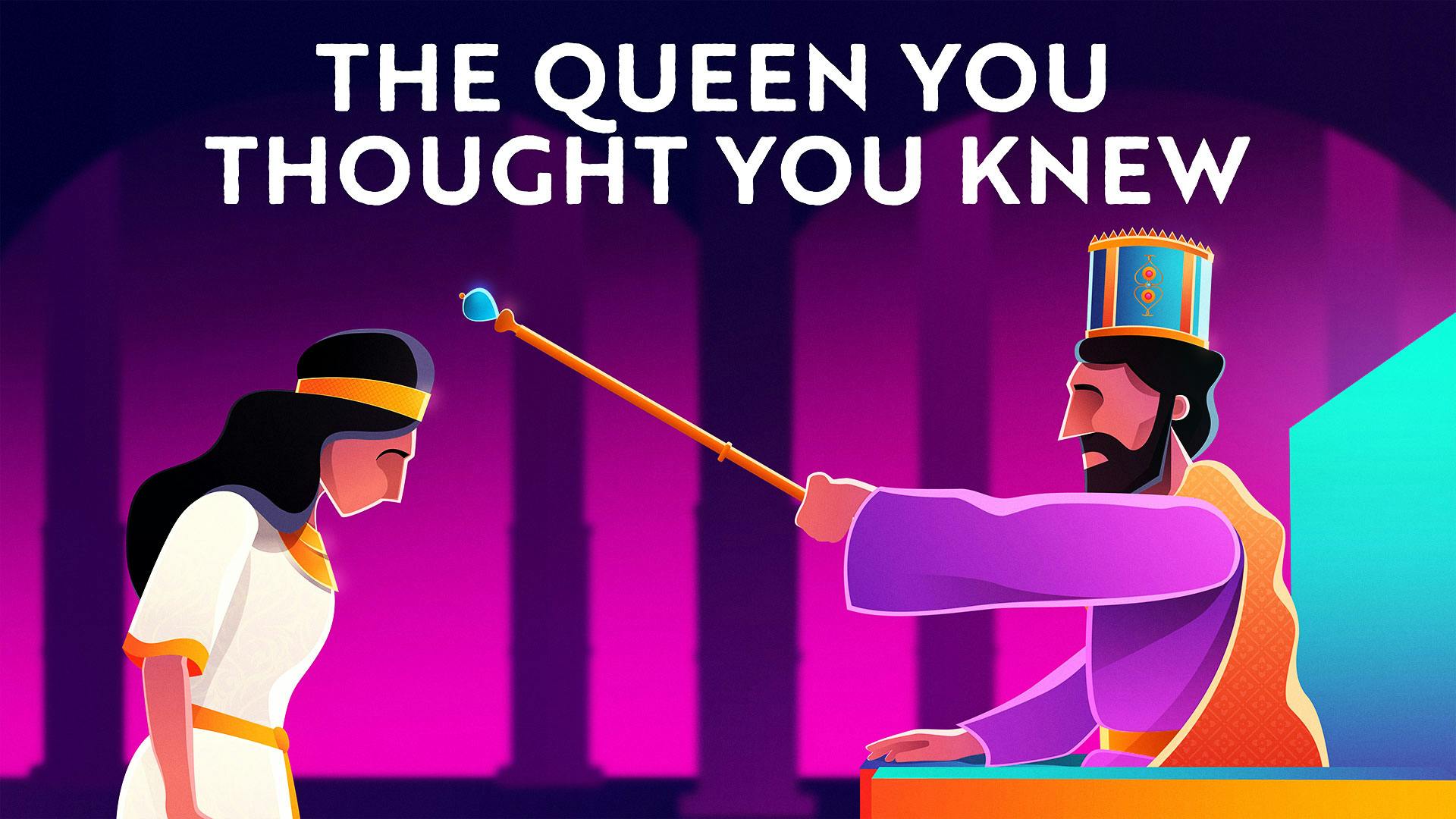
The Queen You Thought You Knew
Video series • Part 1 of 6 • 11 min
Step beyond the children's version of Purim you learned in third grade. Uncover the sophisticated psychological strategies, political maneuvers, and hidden motivations that make the real Megillah a masterpiece of suspense.

Why do we send Mishloach Manot?
Video series • Part 1 of 2 • 46 min
What does sending food have to do with the Purim story, and why did Mordechai insist we continue this practice forever?
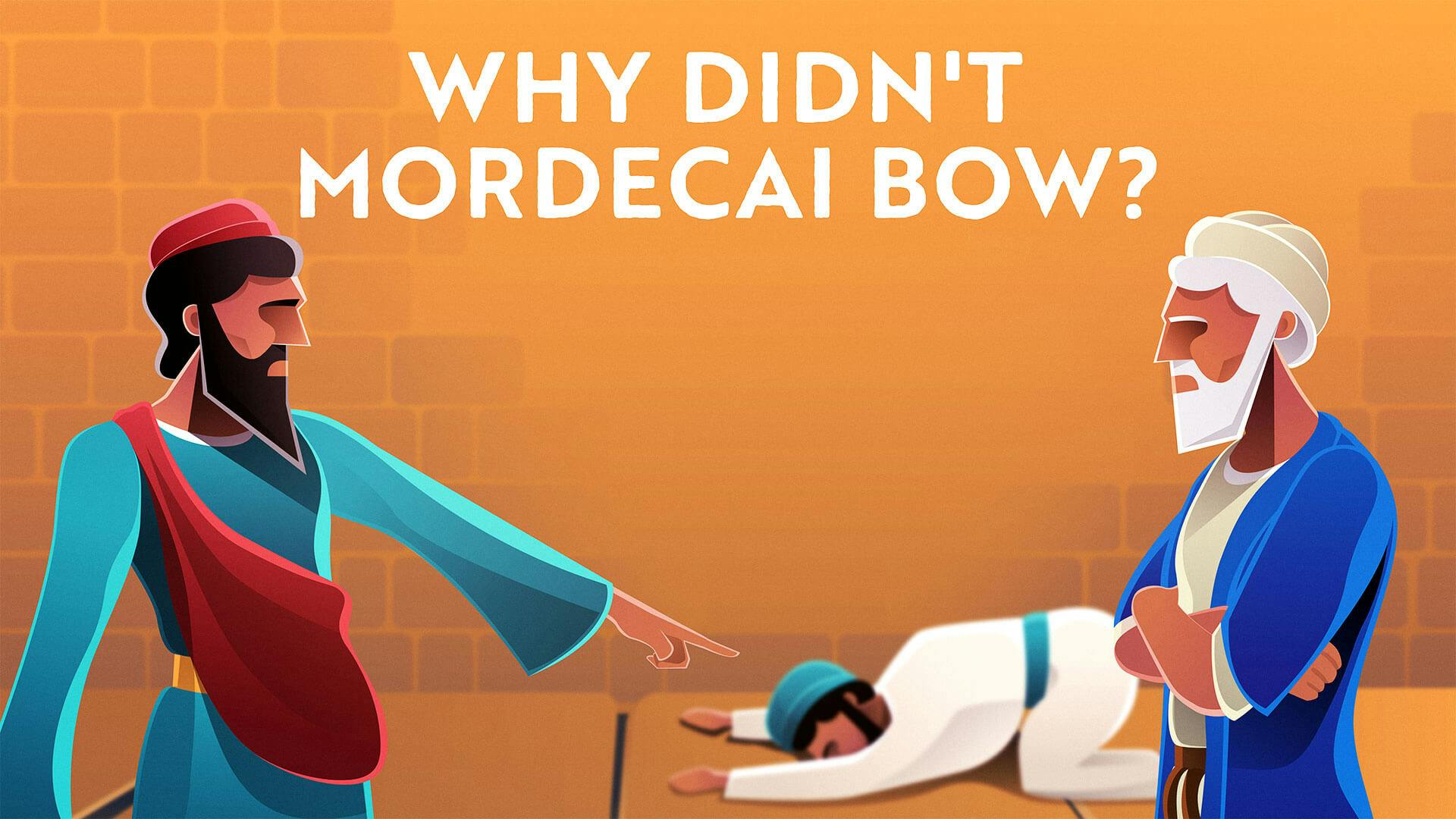
Why Did Mordechai Really Refuse to Bow to Haman?
Video series • Part 1 of 2 • 1 hour, 2 min
Everyone knows Mordecai refused to bow to Haman, but the text of the Megillah is strangely silent about any idol. Discover the fascinating biblical parallel that reveals Mordecai's true motivation—and transforms our understanding of Purim's hero.

Unmasking The Mysteries Of Purim
Video • 2 hours, 7 min
Rabbi Fohrman explores the connection between the stories of Megillat Esther and Adam and Eve in the garden of Eden. Could the very first story in the Torah have any connection to the very last story of the Torah? And if so...what does that mean for the way we understand the holiday of Purim today?
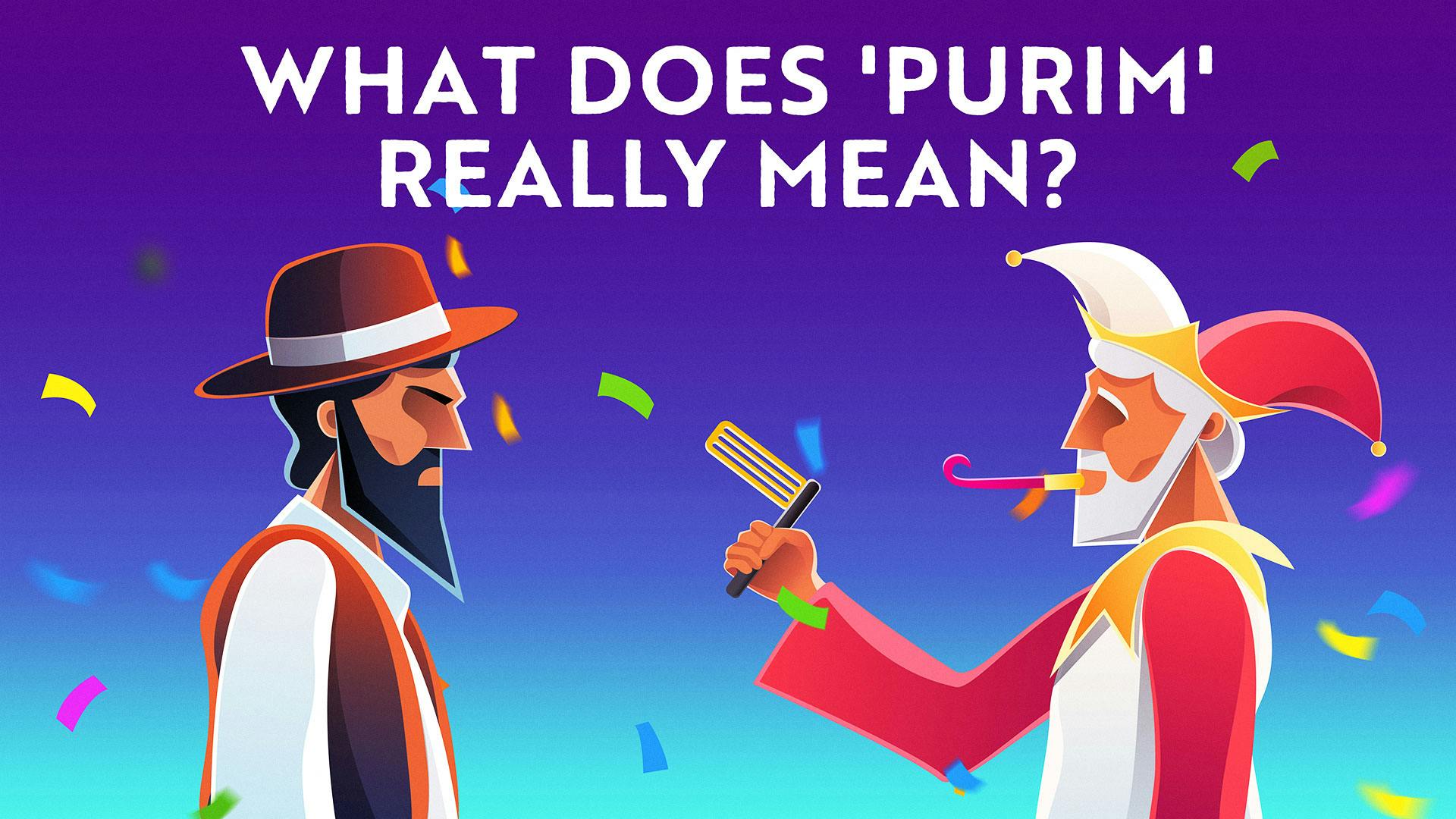
Why Is ‘Purim’ Named After Haman's Lots?
Video series • Part 1 of 4 • 6 min
We call it "Purim" after Haman's lots—the very device he used to determine when to destroy us. But why would we ever want to immortalize a tool of our destruction? Discover how the Hebrew word "pur" carries a double meaning that turns Haman's weapon into Esther's triumph—and why this linguistic twist reveals the true spiritual message of the holiday.

Purim In The 21st Century
Video • 8 min
Why is celebrating Purim important today – or even at all? Sure, Purim is the “holiday that will never be forgotten,” and celebrates the salvation of the Jewish nation, but it is also the rare holiday where God doesn’t take center stage in the story. Is this a clue that Purim celebrates our own contribution, alongside God’s? Of course, we recognize that Purim celebrates the work of God’s helping hand “in the background.” That certainly seems like an important reason to celebrate Purim for all eternity. But aren’t we partly responsible for our achievements? This Purim video sets out to uncover a meaningful reason as to why we still celebrate Purim today.

A Book Like No Other - Season 3: Megillat Esther
Audio • Part 1 of 5 • 31 min
The Book of Esther has no Divine instructions, no prophecies, no outright miracles. God doesn’t even get mentioned. We all love hearing how Mordechai and Esther saved their people in a time of crisis – but does this story have any moral message for us? As we’re listening to the Megillah on Purim, what can we learn about coming close to God in our everyday lives?
More Purim Guides

Purim 101: What Is Purim?
Printable Guide
Purim 101: What Is Purim?

Mishloach Manot
Article
Purim day is filled with the excitement of giving and receiving Mishloach Manot, small gifts of delicious food. Mishloach Manot come in all shapes and sizes, but, bagged, boxed or in baskets, these special Purim gifts add immensely to the joy and warmth of the holiday. Why do we give Mishloach Manot on Purim? And what goes into a perfect Purim basket? Scroll down to find out.
Purim Pages
What is Aleph Beta?
Aleph Beta is a unique kind of Torah library. Led by our founder, Rabbi David Fohrman, we are dedicated to high-level, textual Torah learning for adults that is intellectually and spiritually sophisticated, that enlivens your Jewish practice and helps you forge a deeper connection to God. Whether you’ve been learning in yeshiva for years or you’re just beginning your Torah journey, you’re sure to find something meaningful and surprising waiting for you here.
Browse our library of over 1,000 beautifully produced animated videos, podcasts, deep dive courses, and printable guides. Topics include the weekly parsha, Jewish holidays & fast days, laws & mitzvot, prayers, relationships, big philosophical ideas and more. Have something to say at the Shabbos table that will amaze your family and guests and bring deep meaning into their lives.
